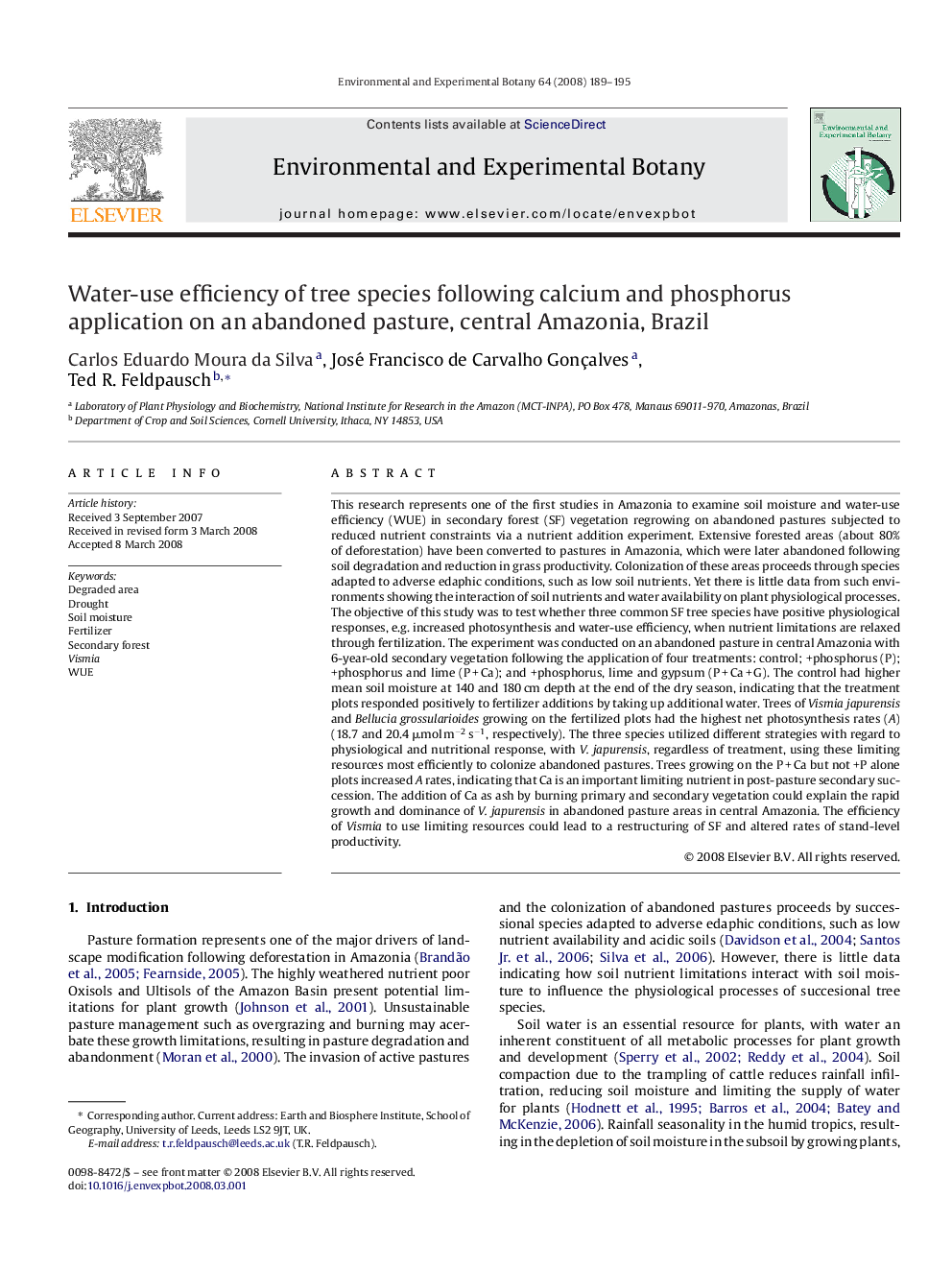| Article ID | Journal | Published Year | Pages | File Type |
|---|---|---|---|---|
| 4555398 | Environmental and Experimental Botany | 2008 | 7 Pages |
Abstract
This research represents one of the first studies in Amazonia to examine soil moisture and water-use efficiency (WUE) in secondary forest (SF) vegetation regrowing on abandoned pastures subjected to reduced nutrient constraints via a nutrient addition experiment. Extensive forested areas (about 80% of deforestation) have been converted to pastures in Amazonia, which were later abandoned following soil degradation and reduction in grass productivity. Colonization of these areas proceeds through species adapted to adverse edaphic conditions, such as low soil nutrients. Yet there is little data from such environments showing the interaction of soil nutrients and water availability on plant physiological processes. The objective of this study was to test whether three common SF tree species have positive physiological responses, e.g. increased photosynthesis and water-use efficiency, when nutrient limitations are relaxed through fertilization. The experiment was conducted on an abandoned pasture in central Amazonia with 6-year-old secondary vegetation following the application of four treatments: control; +phosphorus (P); +phosphorus and lime (P + Ca); and +phosphorus, lime and gypsum (P + Ca + G). The control had higher mean soil moisture at 140 and 180 cm depth at the end of the dry season, indicating that the treatment plots responded positively to fertilizer additions by taking up additional water. Trees of Vismia japurensis and Bellucia grossularioides growing on the fertilized plots had the highest net photosynthesis rates (A) (18.7 and 20.4 μmol mâ2 sâ1, respectively). The three species utilized different strategies with regard to physiological and nutritional response, with V. japurensis, regardless of treatment, using these limiting resources most efficiently to colonize abandoned pastures. Trees growing on the P + Ca but not +P alone plots increased A rates, indicating that Ca is an important limiting nutrient in post-pasture secondary succession. The addition of Ca as ash by burning primary and secondary vegetation could explain the rapid growth and dominance of V. japurensis in abandoned pasture areas in central Amazonia. The efficiency of Vismia to use limiting resources could lead to a restructuring of SF and altered rates of stand-level productivity.
Related Topics
Life Sciences
Agricultural and Biological Sciences
Ecology, Evolution, Behavior and Systematics
Authors
Carlos Eduardo Moura da Silva, José Francisco de Carvalho Gonçalves, Ted R. Feldpausch,
